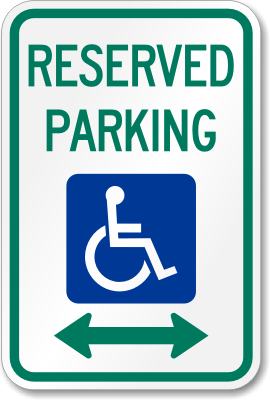ADA handicap parking rules – signs and painted symbols
A question on our popular post on ADA handicap parking rules came from a reader who wanted to understand the difference between the posted sign and the painted symbol of accessibility. That reader tells us:
I work at a Doctor’s office, and we have more than the required number of handicap spaces in our patient parking lot. However, we have a few additional handicap spaces in the employee parking lot, and there isn’t enough space for all the employees, so some of the employees have to use the handicap space in the employee parking lot. We have a patient who comes in frequently and threatens to call the police for the employees parking in handicap spaces. If the office was to remove the signs and the paint still remains, would this still be considered a handicap parking space?
Phew! This touches on a lot of issues, but the biggest one is this: the non-permit-holding, non-disabled employees shouldn’t be parking in accessible spaces, no matter what. And since both patient and employee parking lots need to have the minimum number of spaces, they would have to make sure the employee lot still meets that minimum before removing spaces to accommodate all their employees’ parking needs.
ADA standards mandate that lots indicate handicap parking spaces by posting a sign that bears the International Symbol of Accessibility.
The second issue seems to be a signage one; namely, does the painted symbol on the pavement indicate a disabled spot, even without a sign? The 2010 Standards tell us that a sign is the required marker for an accessible spot, bearing the International Symbol of Accessibility, and there are no additional requirements for the painted symbol.
However, there may be some state or local jurisdictions that have gone above the federal guidelines and also require the painted symbol. Either way, any driver seeing that symbol still painted on the concrete might reasonably assume it’s an accessible space without looking for the mandatory signage, so if you’re choosing to remove an accessible space from a lot (and can do so compliantly) then it’s probably a good idea to remove the paint, as well.
As with all our conversations with our readers, we’re not providing legal advice, and business owners should always consult with specialists or lawyers for answers to specific problems. A great resource for employers looking to understand the difference between their own parking lots, or parking lots managed by others but used by their employees, is provided by the Northwest ADA Center.
– K. Cavouras
Related Posts
Category: Regulations






















